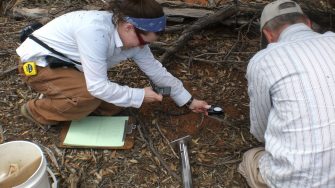
In this study, we'll simulate natural disturbances by animals and examine how plants and soils respond to herbivory and disturbance in a dry woodland.
Supervisor: Professor David Eldridge
Synopsis
Australia has experienced one of the highest rates of mammal loss globally. The loss of species that disturb the soil while foraging has resulted in reductions in potentially important ecosystem effects such as nutrient flows, surface stability and trophic interactions. It may also have affected different plant communities, though we know little about this.
We have a very poor understanding of the extent to which different disturbance types, their densities, and their frequency of disturbance affect plants and soils, and whether too much disturbance has unintended negative consequences for ecosystems.
This project is part of a larger study that aims to provide conservation managers with important information on how to ensure functional soil and plant processes whilst maintaining populations of reintroducing locally extinct, soil disturbing animals.
The project is carried out in two conservation reserves managed by the NSW National Parks and Wildlife Service and the Australian Wildlife Conservancy.
Aims
To explore the direct and indirect effects of disturbance on plants and soils, how they vary between different disturbance types and across different communities.
Benefits to student
This is a multi-disciplinary project that will expose the student to a diverse range of skills. You will:
- work on a high priority conservation project
- experience the problems associated with managing soils and vegetation in different environments
- experience a mixture of fieldwork and data analyses
- learn how to assess soil and vegetation health
- gain skills in laboratory techniques
- be exposed to the activities of the National Parks and Wildlife Service
- have fun and work with great people.
Get involved
To learn more about this project, contact Professor David Eldridge
